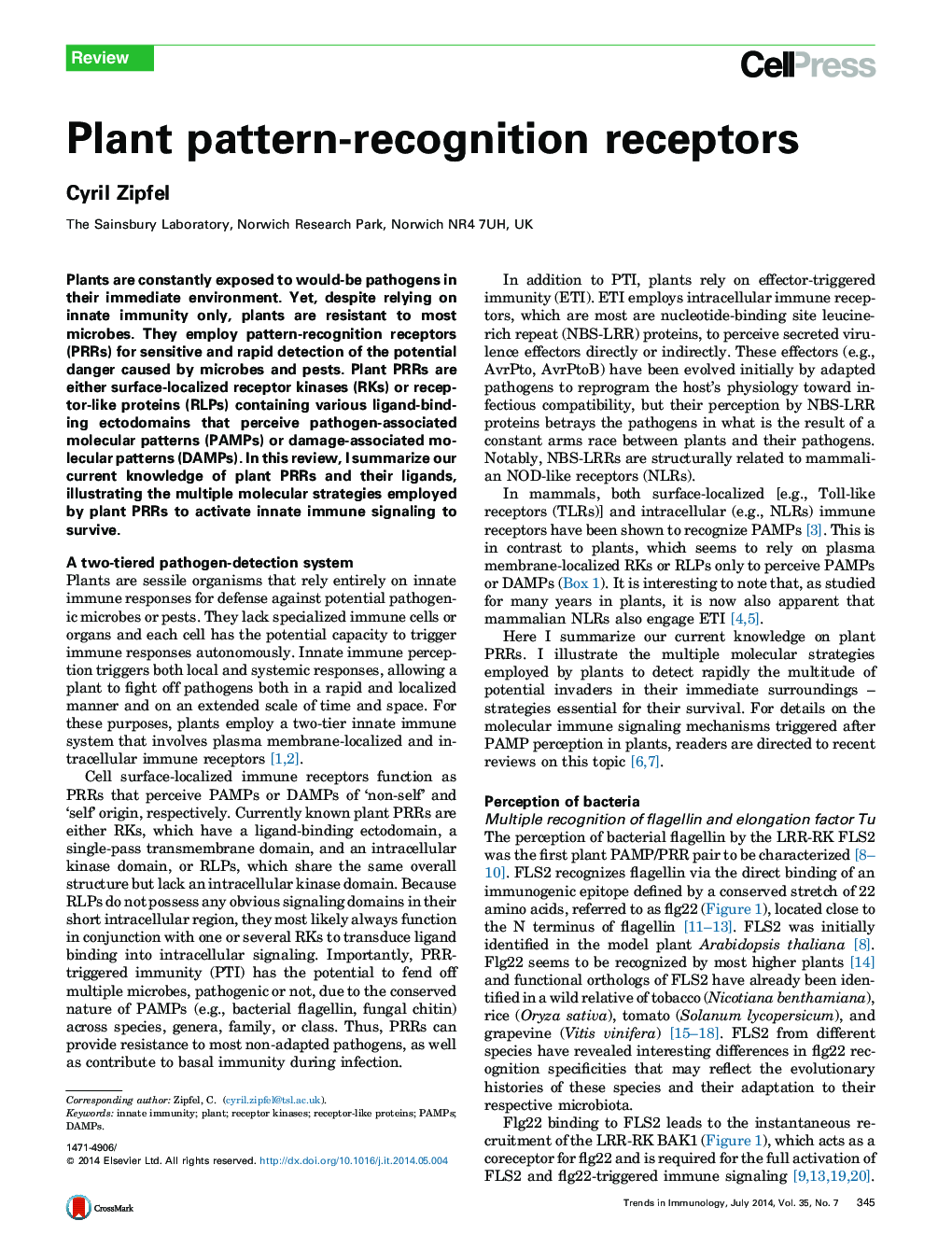| Article ID | Journal | Published Year | Pages | File Type |
|---|---|---|---|---|
| 4359904 | Trends in Immunology | 2014 | 7 Pages |
•Plant PRRs are surface-localized receptor kinases or receptor-like proteins.•Plant PRRs recognize a wide range of microbe- or plant-derived molecules.•Known plant PAMP/PRR pairs illustrate distinct molecular-recognition mechanisms.•PRRs can be used to engineer broad-spectrum disease resistance in crop plants.
Plants are constantly exposed to would-be pathogens in their immediate environment. Yet, despite relying on innate immunity only, plants are resistant to most microbes. They employ pattern-recognition receptors (PRRs) for sensitive and rapid detection of the potential danger caused by microbes and pests. Plant PRRs are either surface-localized receptor kinases (RKs) or receptor-like proteins (RLPs) containing various ligand-binding ectodomains that perceive pathogen-associated molecular patterns (PAMPs) or damage-associated molecular patterns (DAMPs). In this review, I summarize our current knowledge of plant PRRs and their ligands, illustrating the multiple molecular strategies employed by plant PRRs to activate innate immune signaling to survive.
